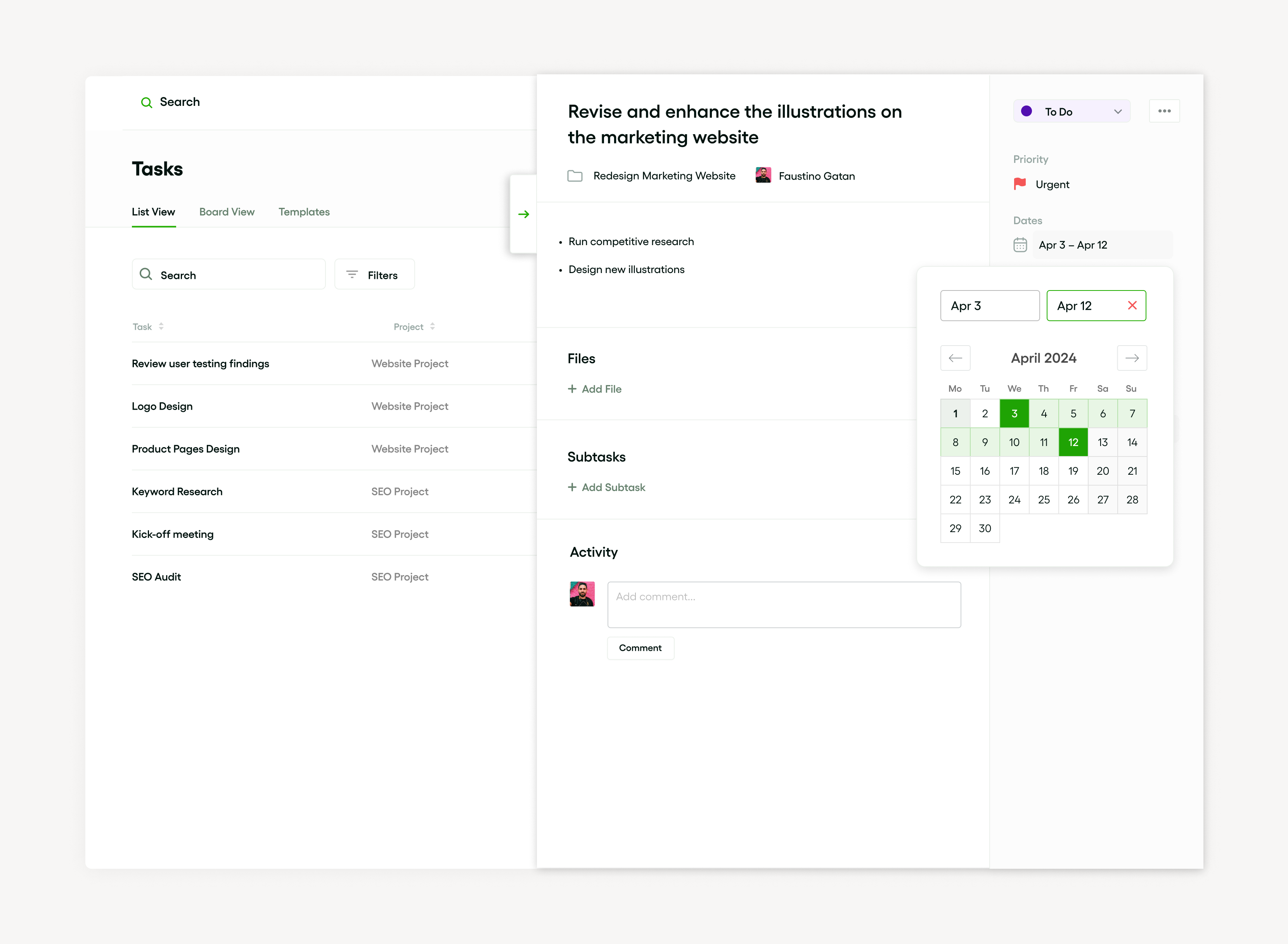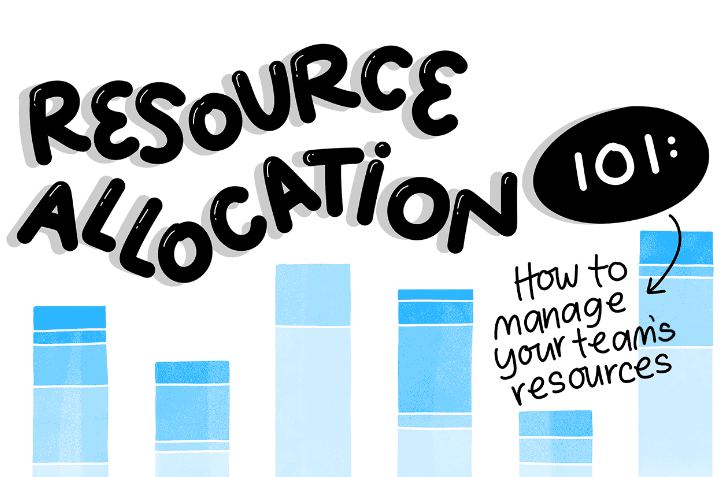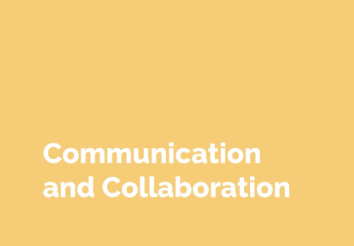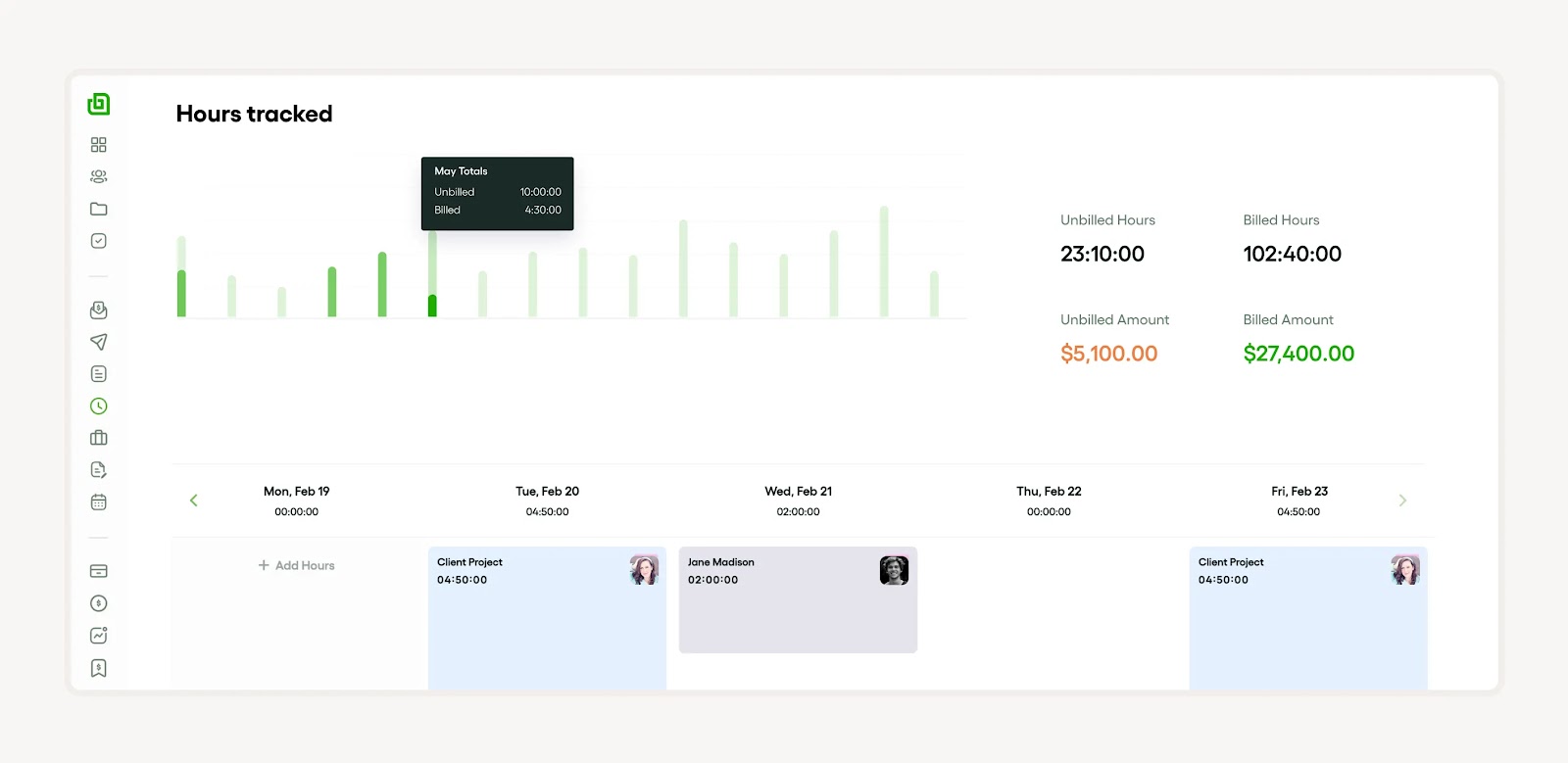A Gantt chart is an essential tool in project management that can greatly assist in project planning by providing an illustrative view of a project timeline. The noticeable thing about this tool is it helps in project scheduling and control as it demonstrates task schedules, the sequence of tasks, project deadlines, and the critical path leading to project completion.
Moreover, Gantt charts enable effective tracking of project progress and the execution of tasks. What's more, they are particularly useful with high project complexity as they outline project tasks and indicate project milestones through a visual overview. Further, there is no doubt that they facilitate project updates, and reassure stakeholders of the progression toward the objectives.
Introduction to Gantt Charts
One thing to be noted: Gantt charts are commonly used in project management as a highly visual tool to illustrate the start and finish dates of project tasks.
It's an essential method for project planning and scheduling, and, notably, enables project managers to set project milestones and anticipate the critical path towards project completion.

It’s staggering how these charts provide a clear view of the project timeline, and the scheduled tasks, which can significantly simplify project complexity. There is no denying that regular project updates are inherently depicted within Gantt charts. This assists teams in promptly addressing delays.
Definition of a Gantt Chart
Gantt Chart– A visual tool primarily used in project management that enables project managers to schedule, visualize, as well as monitor the progress of their projects.
To add on, It provides a graphical illustration of a project timeline featuring a series of horizontal lines that represent the amount of work needed to complete a project task.
By tracking progress and task execution, a Gantt chart can depict project complexity, designate the critical path and more.
History and evolution of Gantt Charts
An interesting thing to observe is this chart emerged in the 1910s, invented by Henry Gantt. Initially used for project scheduling and control in the construction and shipbuilding sectors; they played a crucial role in simplifying project complexity and the tracking of progress.
Over the years, these charts have evolved to accommodate more details, for instance:
- Project tasks
- Milestones
- Deadlines
Nowadays, Gantt charts are digital, and, in general, allow real-time project updates and task execution tracking.
Understanding the components of a Gantt Chart
It is important to highlight that the three critical components of this chart are:
- Project tasks: The notable thing about this is they are important in detailing the activities necessary for achieving project completion. Tasks are displayed with start dates and duration.
- Project timeline: It’s evident that it provides a visual overview of the project’s progress as well as helps in tracking progress or delays.
- Project milestones: One of the important things to note is they mark critical dates or goals in the project. As a result, it provides a sense of project complexity and critical path.
Tasks and activities
One noticeable thing is the tasks of the project entail a detailed breakdown of every necessary step towards project completion, and that too all while keeping in step with proper project scheduling and control!
Certainly, project scheduling is pivotal as it involves the allocation of resources, and, the cool thing about this is it defines and arranges task schedules. What’s amazing is it gives a clear picture of the project's complexity.
Establishing project milestones and adhering to project deadlines are essential for task execution. It comes as no surprise that regular project updates enable the team to understand the progress of the project while pushing through potential bottlenecks in time.
Timeframes and deadlines
An interesting thing to observe is that effective project management involves setting up a clear project timeline, and it's interesting to point out that it establishes defined project milestones. In addition, it sets relevant project deadlines. As evident, a well-organized project timeline is crucial for tracking progress and ensuring task execution on time.

Task dependencies
In the realm of project management, understanding the dependencies of tasks is crucial to successful project completion. One thing is for certain: Task dependencies can affect project timelines and task schedules, and, obviously, it can lead to potential changes in project milestones. There is no denying that effective project planning and scheduling control can help identify these dependencies early on.
The sad thing about project complexity is it often increases with the number of dependencies, necessitating regular project updates and careful tracking of progress to ensure timely task execution.
Progress tracking
Remember, the efficient management of projects includes having a system for tracking progress, where project timelines and the execution of tasks are effectively monitored. This allows for updates and immediate actions towards project completion.
It's well known that features like project deadlines, task schedules, etc. are integral parts of project planning, as they help evaluate the project progress systematically.
The role of Gantt Charts in project management
In the management of projects, these charts graphically represent the project timeline; what's obvious is it includes the start and finish dates of project tasks along with their interdependencies. They also highlight the critical path.
Furthermore, a notable thing to observe is these charts facilitate tracking progress by indicating project milestones and project deadlines. One of the interesting things about this visual aid is that for project teams to see the status of task execution becomes as easy as pie! Through Gantt charts, the project progress can be conveniently monitored. It’s astounding how this tackles project complexity effectively!
Planning and scheduling
In the realm of project management, in general, planning and scheduling are integral for accomplishing project tasks efficiently. You should know that effective project planning involves the determination of project milestones and setting appropriate task schedules. On the other hand, project scheduling and control involves tracking progress toward the completion of the project.

Understanding the project timeline is critical for managing project complexity and task execution. Lastly, remember to identify the critical path as it has been proven beneficial in optimizing the resources and achieving project deadlines.
Resource allocation
It's an undeniable truth that the effective management of projects requires a balanced and strategic resource allocation so that it can meet the project timeline. One notable thing is the project planning stage should always include clear task schedules for optimal workflow.

Here are key aspects where resource allocation is crucial:
- Project tasks: Definitely the right resources should be set for the correct tasks to ensure efficient task execution.
- Project milestones and project deadlines: Another noticeable thing is resources should be adjusted and reallocated as needed so that they can meet important milestones and deadlines.
- Project updates: The stunning thing about regular tracking of progress and project updates is it helps in modifying the allocation of resources as per requirements.
Communication and collaboration
One thing is clear: Project management is an essential aspect of effective communication and collaboration. It provides a framework for organizing, planning and controlling project tasks based on the milestones of the project and timeline.

Here are some key aspects:
- It is important to observe that the execution of tasks and task schedules are used to manage project complexity along with monitoring project progress.
- It is imperative to note that regular project updates are crucial for keeping all stakeholders informed about the development of the project.
When to use a Gantt Chart
What’s fascinating is that the Gantt chart is especially beneficial when dealing with projects of high complexity where a clear depiction of task execution, the schedule of tasks as well as critical paths are required.
Please also use it when you need to visualize project tasks against a project timeline that marks significant project milestones and project deadlines. It’s fascinating to find out how it keeps everyone updated about the project’s progress! Amazingly, it perfectly lays out the path to project completion too!
Complex projects with multiple tasks
What's worth highlighting is in the management of projects, handling complex projects with multiple tasks often entails an intricate process of:
- Project planning
- Scheduling
- Control
One usual thing is these projects require a detailed project timeline, and it should be inclusive of project milestones and project deadlines.
Another fascinating thing is the strategy may also heavily rely on the critical path method to calculate project completion.
Notably, the complexity of a project is usually proportionate to the level of attention needed towards task schedules as well as monitoring the progress of the project.
Projects with defined deadlines
It's crucial to be aware that project management often involves handling projects with defined deadlines. An essential aspect of managing such projects is project scheduling as well as control, which ensures that the project tasks are efficiently distributed and completed within the project timeline.

This process includes the tracking of progress together with adjusting task schedules as necessary.
Plus, managing project complexity can be achieved through establishing clear project milestones and maintaining regular project updates. With a well defined deadline, it’s astonishing how the project progress can be better managed and controlled!
Projects requiring team collaboration
What’s remarkable is the collaboration of teams is fundamental in project management. It helps in completing project tasks following the agreed project timeline. The best thing about these collaborative efforts is they make it easier to achieve project milestones, meet project deadlines and more such things.
It’s staggering to find out how task execution becomes more efficient as every team member understands their task schedules clearly!
Another important thing is team collaboration helps in tracking progress, and it supports overall project progress. Remember, a project completed as a team always yields better results.
Projects involving stakeholder communication
One of the crucial things to understand is stakeholder communication is a vital aspect of any project. Interestingly it involves proper project management so that it can ensure the seamless execution of tasks and adherence to the project timeline. As project complexity increases, regular project updates provide stakeholders with a clear understanding of progress and help in tracking changes.
It is widely acknowledged that ‘Critical path analysis’ is applied to keep project milestones and project deadlines in check, hence driving towards project completion. What’s noticeable is tools for project scheduling and control assist in effectively managing task schedules.
The noticeable thing about these strategies is they ultimately lead to increased stakeholder satisfaction, as they are kept abreast with project progress.
Benefits of using Gantt Charts in project management
Gantt charts are a valuable tool in project management, offering a visual overview of project tasks, timelines, and milestones. They combine project planning and scheduling and control into one easy-to-read chart, simplifying complex projects and keeping everyone in the loop with project updates.
Gantt charts make it easier to track progress by detailing task schedules and highlighting the critical path to project completion. This helps manage project complexity, meet deadlines, and keep the team in sync with the project's progress.
Enhanced project visualization
Enhanced Project Visualization is a fantastic part of project management! It involves planning and tracking progress through project milestones and deadlines. Visualizing these components makes task execution and control a breeze by helping you schedule and prioritize tasks effectively.
The critical path method, for instance, can really help you understand project complexity better. It improves scheduling and lets you manage the project timeline more effectively, allowing teams to predict project completion more accurately. Regular updates keep everyone in the loop about progress, making visualization easier for all stakeholders.
Improved time management
The foundation of successful project management is effective time management, which is primarily determined by project scheduling and control. This is achieved through comprehensive project planning, enabling precise task execution and facilitating the tracking of project progress.
Key elements of this time management strategy may include creating an efficient project timeline and ensuring diligently monitored project updates to efficiently reach project completion. By understanding the project's complexity and accurately identifying the critical path, it’s just stunning how one can improve time management significantly in project tasks.
Increased team accountability
With effective project management, staff members are allowed a clear view of their completion status, milestones reached, and upcoming project tasks. The great thing about casework allocation and project scheduling is they encourage personal responsibility where each team member understands their duty which boosts their commitment and work ethic.
Through regular project updates and tracking progress, team accountability is heightened.
This keeps everyone aligned with the project timeline, helping tasks get done efficiently. The transparency boosts overall project completion because everyone is committed to meeting deadlines and tackling complexity together.
Limitations of Gantt Charts
Gantt charts, while somewhat helpful for project management, have significant limitations. It’s a sad thing that sometimes they fail to effectively represent the complexity of larger projects, as they do not show the interaction or interdependency between tasks. This makes project scheduling and control much more difficult. Sadly. Gantt charts rely heavily on initial project planning projections, which can often be inaccurate, negatively impacting the project timeline.
Updates are not easily reflected in Gantt charts. Since they present a static view of the project progress, it is difficult to make dynamic project updates or show real-time progress toward project completion. What’s worse is these limitations can hinder task execution and tracking the progress of project milestones.
Not ideal for Agile projects
One thing is proven: Traditional project management practice is not ideal for Agile projects due to its strict rules and processes. Agile works best with flexible planning, and, usually, it allows for alterations in task schedules and project progress. It’s a worrying thing that this lack of agility can impact project milestones, project updates, and project completion dates.
Another reason is the emphasis on detailed project scheduling and control in traditional management.
In Agile projects, the focus is on task execution and tracking progress. It’s about delivering value in small, iterative steps, which doesn’t really fit with fixed timelines.
Finally, Agile projects often deal with higher complexity, requiring frequent changes and quick responses, which might not work well with the rigid tasks and deadlines of traditional management.
Can become overly complex
Project management is a crucial process that frequently becomes overwhelmingly complex for various reasons. A common issue is the failure to keep track of project tasks and the lack of effective project scheduling and control systems. This leads to challenges in determining the critical path and, ultimately, hampers project completion.
Another sad thing to note is project complexity may increase when task schedules are not adequately managed, and project milestones are overlooked. As evident, this can pose significant challenges, especially when unavoidable changes occur in the project timeline.
It’s obvious that delays in task execution and missed project deadlines can add to the complexity.
Popular Gantt Chart software for agencies
Gantt chart software is a favorite among agencies for seamless project management. These tools provide a visual representation of project tasks, making it easier to schedule, control, and track progress toward completion. Some of the most popular Gantt chart software includes Bonsai, MS Project, and SmartSheet.
Bonsai
You should know that Bonsai Software is a comprehensive business management platform tailored for agencies, consultant, and professional service providers. It provides an all-in-one solution to streamline operations and enhance productivity. Generally, it's designed to consolidate projects, clients, and teams into a single, user-friendly interface. As a consequence, this makes it a top choice for agencies, consultant, and professional service providers looking to optimize their workflows.
.webp)
Here's how Bonsai empowers you at each step:
- Bonsai simplifies client interactions with an integrated CRM system, allowing for efficient lead management and a seamless client experience
- The platform offers robust project management tools, including task assignment, time tracking, and budgeting, to deliver projects on time and within budget.
- With features like invoicing, payments, and expense tracking, Bonsai helps agencies monitor revenue and manage billing with ease.
- Notably, agencies can customize Bonsai with templates for contracts, proposals, and more, turning leads into clients quickly.
- A dedicated client portal and team collaboration tools ensure that everyone is on the same page, enhancing teamwork and client relations.

Bonsai Software stands out for its ability to integrate various aspects of agency management into a cohesive system. As a matter of fact, it's highly regarded by service providers, agencies and consulting firms for its efficiency and the clarity it brings to managing complex projects.
Whether it's tracking time, managing finances, or collaborating with clients, Bonsai provides the tools that need to thrive.
Microsoft Project
Microsoft Project is an essential tool in the realm of project management. It assists in organizing and managing project tasks, establishing a project timeline, setting project milestones, and ensuring adherence to project deadlines. In addition to that, it facilitates project planning, scheduling, and control. Microsoft Project provides regular project updates, thereby simplifying the task execution process and maintaining oversight of project progress.
Smartsheet
Smartsheet is an outstanding tool for project management, assisting with task scheduling and control, tracking progress, and identifying the critical path to project completion. It helps project managers prioritize tasks and efficiently establish project updates.Overall, Smartsheet provides a robust solution, in particular, for those needing to get a comprehensive view of project progress and maintain tight timelines.
TeamGantt
TeamGantt is a stellar tool for project management that affords users the luxury of tracking progress along with managing project deadlines with ease.
Key features of TeamGantt include a top-notch project scheduling and control system, a powerful method for task execution, and a flexible platform for managing task schedules. Users can effortlessly diagram a project timeline, keep an eye on project progress, and pinpoint the critical path to project completion.
Conclusion: Gantt Charts as a vital tool in project management
It would not be an overstatement to say, “Gantt charts are indispensable in project management as they provide a visual representation of the project timeline and project tasks.” What’s evident is they aid in project planning and in the tracking of project progress that adds clarity to the project complexity.
Plus, they are essential for project scheduling and control, pinpointing critical paths and task schedules while ensuring everything gets done on time. With a Gantt chart, project updates are super smooth, milestones are clearly marked, and deadlines are easily met, promoting efficient task execution all around.







